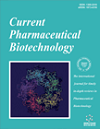
Full text loading...
We use cookies to track usage and preferences.I Understand
Deregulated DNA damage response (DDR) network is implicated in cancer progression and therapy resistance.
The present study was designed to investigate whether nimbolide, an anticancer neem limonoid, targets key components of the DDR signalling pathway in cellular and animal models of oral squamous cell carcinoma (OSCC).
OSCC cells (SCC-4 and SCC-9), 7,12-dimethylbenz[a]anthracene (DMBA)-induced hamster buccal pouch (HBP) carcinoma model, chemoresistant OSCC patient-derived xenograft (PDX) model established in athymic nude mice, and tissue sections from patients with oral premalignant/malignant disease were used for the study. Key molecules that orchestrate the DDR, including the MRN complex, ATM, DNA-PKcs, H2AX, and p53, were analysed by qRT-PCR, immunoblotting, immunofluorescence, and immunohistochemistry. Cell proliferation and apoptosis indices were evaluated.
Nimbolide significantly reduced 8-oxodG levels, expression of MRN, ATMS1891, and γ-H2AX, with an increase in p-p53S15 in OSCC cells as well as in the HBP model. Nimbolide potentiated the effect of KU-55933 in ATM inhibition. In the PDX model, nimbolide suppressed tumor formation, stimulated DDR and apoptosis, inhibited cell proliferation, and enhanced sensitivity to cisplatin. Analysis of p-ATM expression revealed a significant increase during the sequential progression of hamster and human OSCC.
This study provides compelling evidence that nimbolide functions as a DDR inhibitor in cellular and hamster OSCC models and as a DDR activator in the PDX model primarily by targeting ATM. Small molecules like nimbolide that modulate DDR are of immense benefit in cancer therapy. The study has also unveiled p-ATM as a promising biomarker of tumour progression in human OSCCs.

Article metrics loading...

Full text loading...
References


Data & Media loading...

